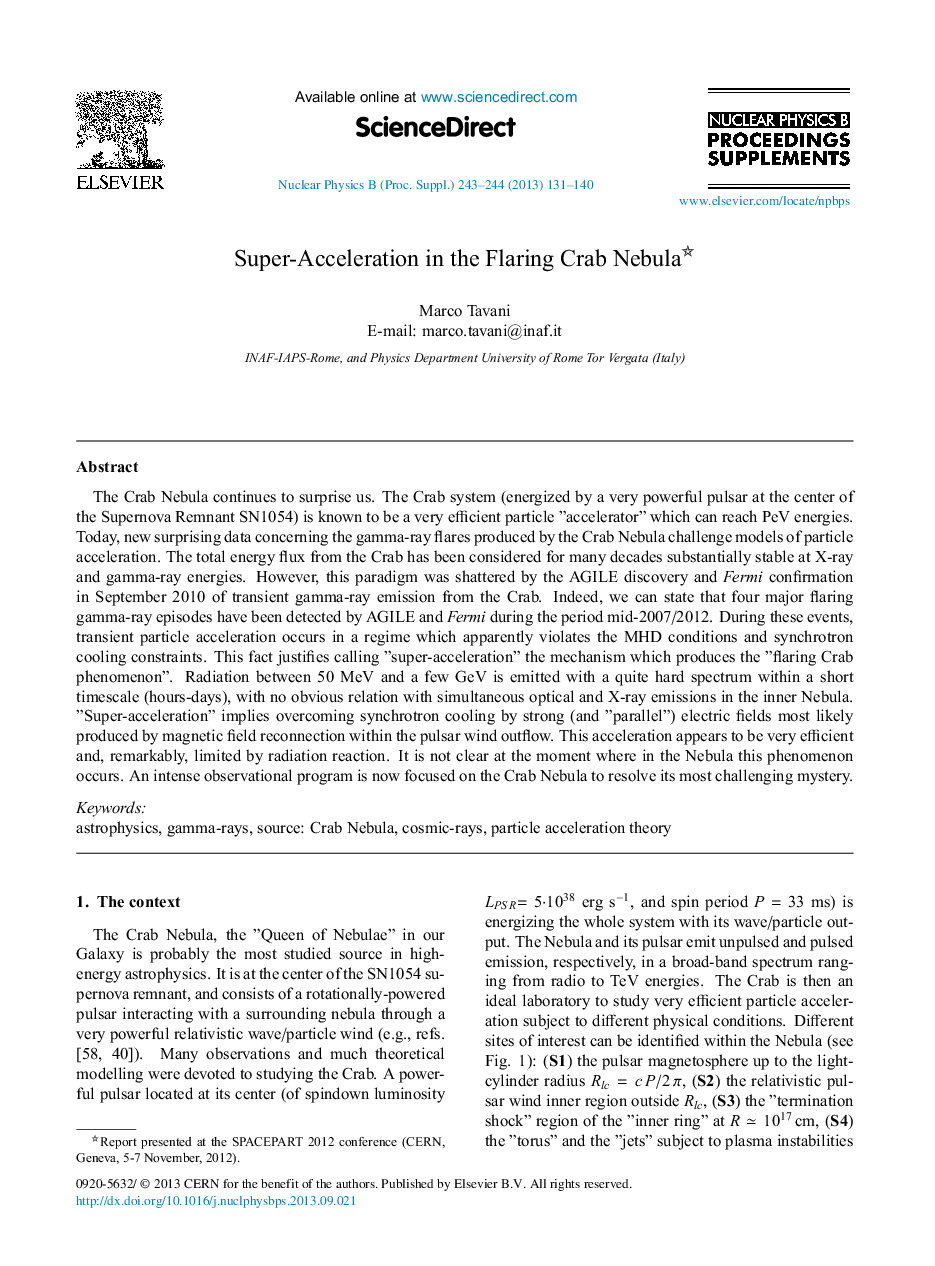| Article ID | Journal | Published Year | Pages | File Type |
|---|---|---|---|---|
| 1847312 | Nuclear Physics B - Proceedings Supplements | 2013 | 10 Pages |
The Crab Nebula continues to surprise us. The Crab system (energized by a very powerful pulsar at the center of the Supernova Remnant SN1054) is known to be a very efficient particle “accelerator” which can reach PeV energies. Today, new surprising data concerning the gamma-ray flares produced by the Crab Nebula challenge models of particle acceleration. The total energy flux from the Crab has been considered for many decades substantially stable at X-ray and gamma-ray energies. However, this paradigm was shattered by the AGILE discovery and Fermi confirmation in September 2010 of transient gamma-ray emission from the Crab. Indeed, we can state that four major flaring gamma-ray episodes have been detected by AGILE and Fermi during the period mid-2007/2012. During these events, transient particle acceleration occurs in a regime which apparently violates the MHD conditions and synchrotron cooling constraints. This fact justifies calling “super-acceleration” the mechanism which produces the “flaring Crab phenomenon”. Radiation between 50 MeV and a few GeV is emitted with a quite hard spectrum within a short timescale (hours-days), with no obvious relation with simultaneous optical and X-ray emissions in the inner Nebula. “Super-acceleration” implies overcoming synchrotron cooling by strong (and “parallel”) electric fields most likely produced by magnetic field reconnection within the pulsar wind outflow. This acceleration appears to be very efficient and, remarkably, limited by radiation reaction. It is not clear at the moment where in the Nebula this phenomenon occurs. An intense observational program is now focused on the Crab Nebula to resolve its most challenging mystery.
